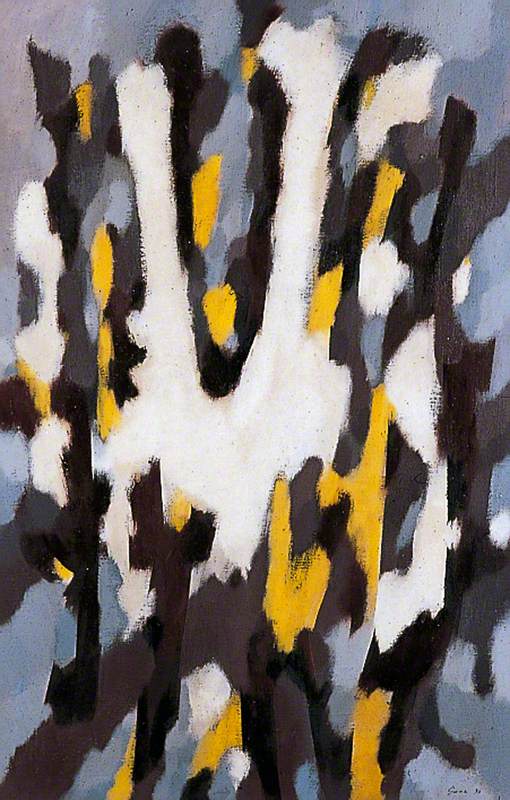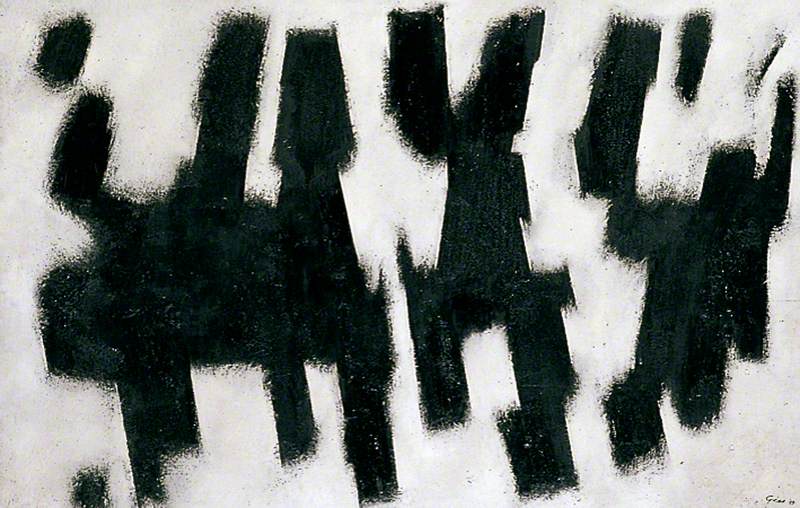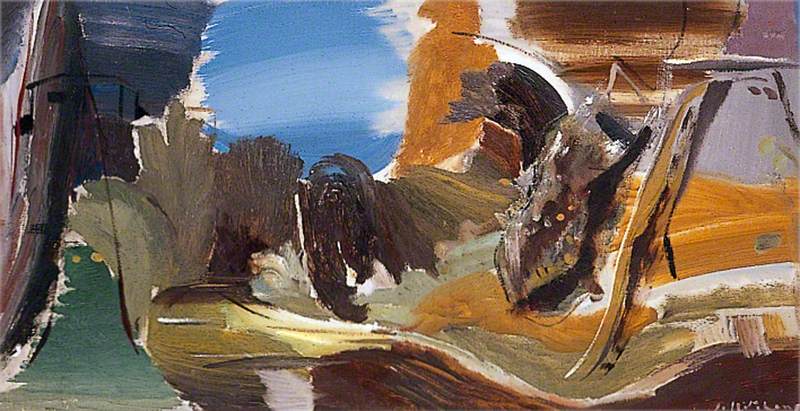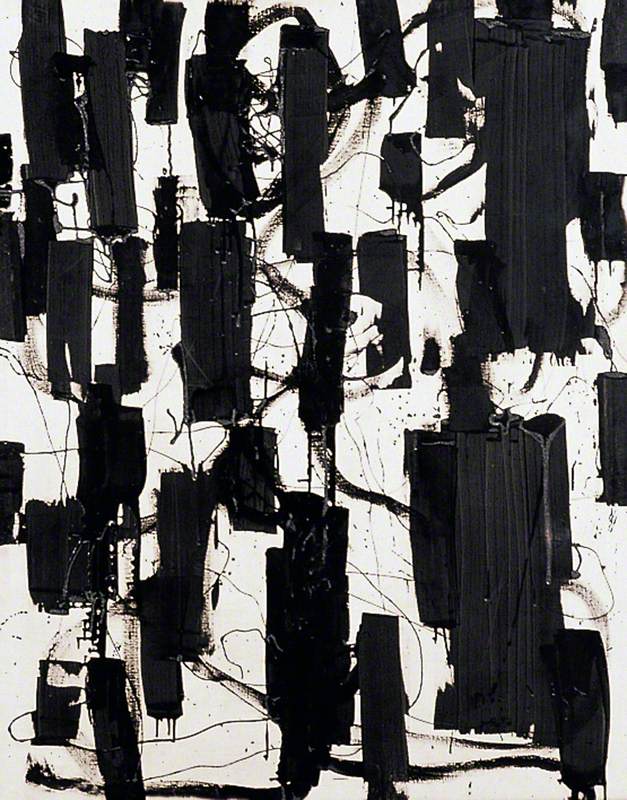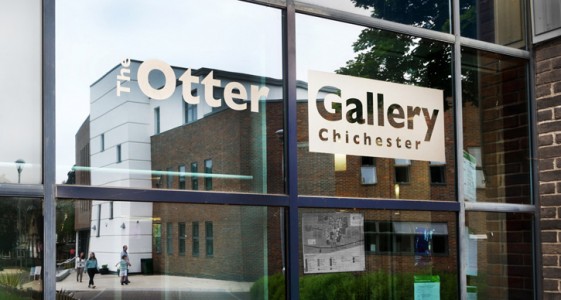The history of the Bishop Otter Art Collection at the University of Chichester is the history of a vision held by two remarkable women: Sheila McCririck (1916–2001) and K. M. Elisabeth 'Betty' Murray (1909–1998).
In this the centenary year of the birth of Sheila McCririck, Head of Art at Bishop Otter College from 1949–1977, it is fitting to celebrate her role and foresight in the creation of a unique collection of twentieth-century British art. Her selection of both figurative and abstract work purchased at the time often from little known artists (when funds were at best limited or, at the start, non-existent) with the support and tenacity of Betty Murray, Principal of Bishop Otter College (1948–1970) frequently in the face of fierce opposition from staff and Governors was ground-breaking.
By 1955 students, staff and visitors to the College could see work by Henry Moore, Paul Nash, Alan Reynolds, Christopher Wood, Graham Sutherland, William Scott, Willi Soukop (his sculpture Mother and Child, in the University's Chapel, being the first to enter the Collection in 1952) and others which were hung around the College simply where they looked right.
Great to see 'Mother & Child', c.1947, by Willi Soukop back in the Chapel @chiuni after being out on loan. #ottergallery #universityofchichester pic.twitter.com/O6EsI6wnsb
— The Otter Gallery (@Otter_Gallery) August 6, 2018
Both women believed in the civilising influence of art and in the educative value of its challenge and to achieve this the works had to be on open display in accessible places. They were unconcerned about spiralling value and irritated by the constraints of insurance and security, which were imposed. Reward came, not in the increased financial value, but when past students began their own original collections or started them in their schools.
Building the art collection
The Collection commenced in the post-Second World War era, when emphasis was on the rebuilding of Britain and the integration of the arts with education. It was founded on two beliefs: that living with works of art added a dimension to life and a quality not available in any other form; and that original works were the only ones capable of bestowing this extension and enrichment.
The limitations of funds (based initially on 10/- per student per annum – there were approximately 200 female students in 1949) restricted acquisitions and the Collection began with paintings, some purchased but many lent by artists for lengthy periods. Among early supporters were William Gear, Ivon Hitchens and John Craxton, often under the auspices of the Contemporary Art Society.
A large number of the paintings belonged to Howard Bliss who proved a generous lender allowing the College first refusal in 1958 of Hitchens's Bleak Spring, at the low price of £250. Even so, as he predicted, this was beyond the College's means. Gear allowed his paintings (White Features and Black Figures) to be acquired by the College at low cost.
The latter was acquired for £50 in April 1964, although Gear had originally suggested £150 (normally it would have been £250) but Betty Murray said that their meagre funds would not cover it. He clearly appreciated their difficulty, having had to build up the Collection at the Towner Art Gallery with insignificant funds, where he was curator from 1958–1964. Gear asked what figure the College could afford and it was Sheila McCririck who suggested the sum of £50.
Betty Murray often initiated contact with artists including writing to Hitchens in August 1949 who replied suggesting ways to acquire works:
'...you don't want artists' second best pictures – nor is it fair to ask painters to lend their best & saleable work for long periods... as the modern painter is mostly hard pressed financially... Why don't you buy two pictures a year on the instalment plan at £25 a year each... If you know the artists you want – then you can write to them... saving the dealers commission of 33%... I could personally let you have a 75 guinea picture for 50 guineas – or call it £50'
Artistic controversy on the campus
Hitchens' Autumn Stream was acquired in January 1950, and as the first work in the Collection it provoked much debate amongst staff and students.
Later that year three 'car-loads' (a mixture of staff and students) visited Graham Sutherland in his studio near West Malling in Kent. McCririck and several students then went to the Redfern Gallery in London to see Green Tree Form. Following these visits Entrance to a Lane (1943) was selected. This was the only instance of a group buying a work.
In 1955 Murray wrote to Stanley Spencer. She and McCririck later visited the Cookham Festival to hear Spencer speak and as he left the Parish Church they stopped him and asked if they could buy a picture. He took them back to his house and they purchased three cartoons for The Resurrection of the Soldiers on the altar wall at the Sandham Memorial Chapel, Burghclere, a few miles south of Newbury and he gave them a first sketch.
Purchases were made from galleries, notably William Scott's Harbour from the Redfern Gallery Coronation Exhibition of work by 60 of the leading contemporary British artists in 1953.
It was immediately loaned to The British Council for inclusion in the second Biennale in Sao Paulo, Brazil. Some Collection items were gifts, and/or commissioned or donated works.
The choices made were subject to criticism. Murray's foreword (1972) to the exhibition of 'Selected Works from the Collection' held at the Gardner Art Centre Gallery, Sussex University explained that this criticism was:
'...when any particular purchase affronted someone's taste. "Truth is Beauty and Beauty is Truth, and that picture is neither truthful nor beautiful" was said of our Patrick Heron (by Governor Lancelot Mason, Archdeacon of Chichester) – with the implication that young students should not be exposed to an abstract of this kind.'
The College Council (Governing Body), shaken by the purchase of Patrick Heron's Black and White: April 1956, queried the Collection as an educative and viable enterprise and prior to their meeting on 7th November 1957 members inspected the pictures, which had been gathered together in an exhibition in the College.
Some saw no value in 'modern art' and/or originals. Others favoured originals but were doubtful of the choice. Walter Hussey, Dean of Chichester, though a private collector with many examples of modern works in his collection, was critical of some choices. A proposal was made at this the last meeting chaired by Bishop Bell that: 'The College's present policy of "artistic challenge" be continued', it was passed with two dissentions.
The amalgamation of Bishop Otter College with Bognor Regis College to form the West Sussex Institute of Higher Education in 1977 caused uncertainty about the Collection's status and how best to protect its future. The solution was for the Collection to stay on the Bishop Otter College site and in the possession of Bishop Otter College and its Residual Trustees. In 1979 an Agreement was constituted between the Trustees of the Bishop Otter Trust and the Institute Trustees. In this the Charity Trustees (Bishop Otter) undertook to loan the Collection to the Institute Trustees, together with what might be added 'and to continue to display it in a manner designed to enhance quality of life at the College'.
Towards a brighter and secure future
The building of a new Learning Resources Centre on the Chichester campus in 1997 provided the opportunity to incorporate a new gallery at its centre which was named the Otter Gallery in honour of Bishop William Otter (1768–1840) in whose memory the original college was founded. Its inauguration in 1998 marked a new phase in the life of a distinguished collection reflecting its original intention to place art at the heart of people's lives.
Gill Clarke, Visiting Professor Otter Gallery, University of Chichester
This is an abridged version of an essay by Gill Clarke and Sally Mather from the new illustrated catalogue published to coincide with this two-site exhibition at Pallant House Gallery and the Otter Gallery. The catalogue, edited by Gill Clarke, is published by Sansom & Co. and is available for purchase from the Otter Gallery or from the University's online store.
